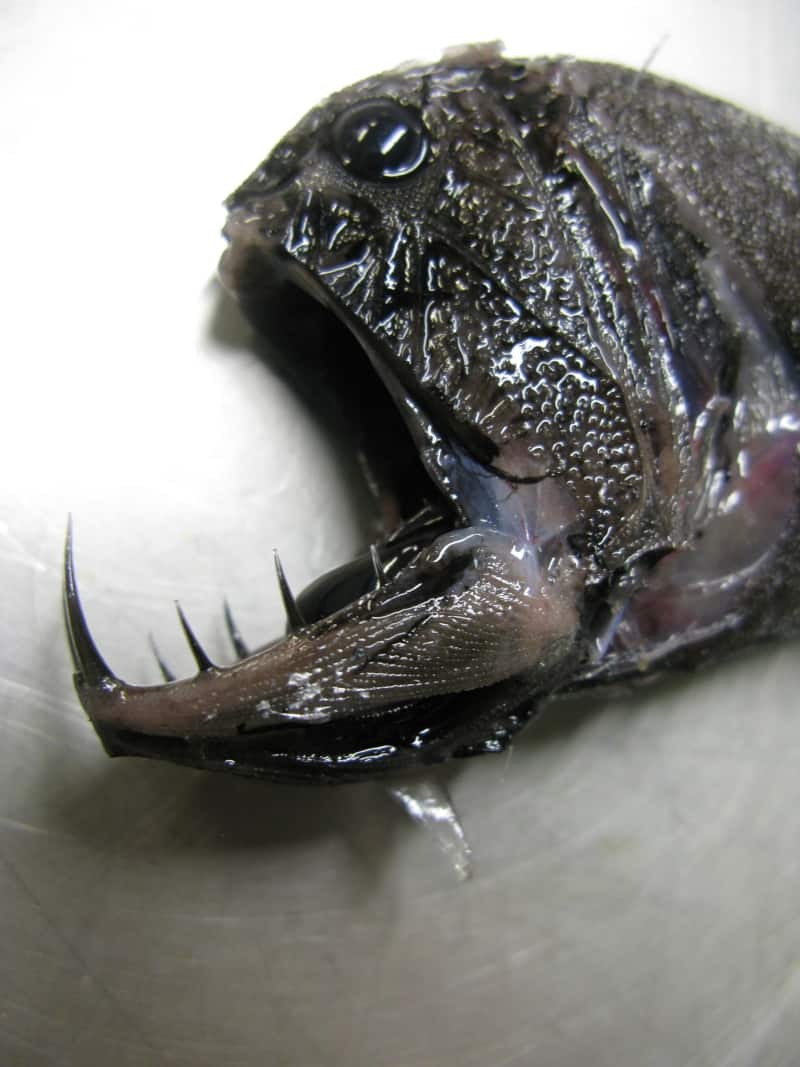Fangtooth Facts
- Most notably, Fangtooth serves as the name of a family of beryciform fish inhabiting the deep ocean. It also appears to be present throughout the world, in both tropical and temperate zones.
- Scientists currently recognize only two species of Fangtooth. Yet, very little seems clear about its reproductive cycle. But experts do know that the larvae appear to be planktonic in nature. Due to the lack of sufficient data, the IUCN currently has no listing for this animal.
- Residing near the surface, it remains easy prey for other species. As it matures, however, it descends to deeper regions. Scientists also believe it to perhaps be a slow-growing species, as most species of fish in the deep sea tend to be.
Related Articles
Fangtooth Physical Description
Firstly, the most noticeable feature of the Hagfish remains its extraordinarily long, fang-like teeth. This serves as the source of the common name. Further, relative to its body size, it has the longest teeth of any known living creature.
But, despite its fearsome appearance, the Fangtooth actually represents a small species. The larger of the two species attains a maximum length of roughly 7 in (18 cm). The eyes stay small and sit high on the head which gives the fish a terrifying, almost alien-like look.
Also, when the mouth closes, the enormous lower fangs actually fit into a specially evolved socket on either side of the small brain. Finally, the entire body predominantly displays a dark brown color.
- Kingdom: Animalia
- Phylum: Chordata
- Class: Actinoptertygii
- Order: Beryciformes
- Family: Anoplogastridae
- Genus: Anoplogaster
Fangtooth Distribution, Habitat, and Ecology
First of all, Fangtooth remains a pelagic family of fish, with a worldwide distribution. It also has one of the widest known ranges of habitat depth. That’s because it ranges between 660-16,400 ft (200 – 5,000 m). Also, the younger the individual, the shallower the depths at which it resides.
In addition, the animal typically will rise closer to the surface at night. This it occurs due to the need to feed by starlight. However, after feeding, it will then return to deeper waters in the evening.
Individuals typically spend their lives either singly or in small groups. The juveniles feed principally on plankton while the mature Fangtooth mainly preys on small fish and cephalopods. These fish, in turn, serve as primary prey for sharks, tuna, and marlin.
Species Sharing Its Range
Check out our other articles on Breathtaking Asian Species, Kurinji, Northern Elephant Seal, Devetashka Cave, Western Pygmy Blue, Marine Iguana, Black Rain Frog, Petra Iris, Indian Vulture

